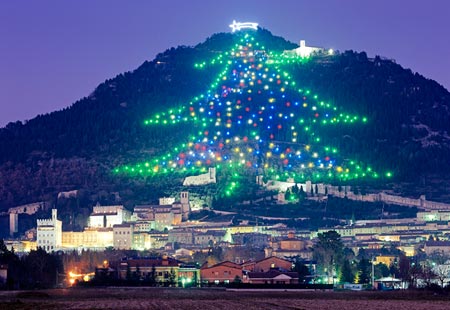As you watch the lighting of the Christmas tree in Rockefeller Center or a rerun of Clark Griswold in National Lampoon’s Christmas Vacation fail to illuminate his house with 250 strands of lights... or drive thru a suburban street which is aglow in outdoor decorations, ever wonder how it all began?
Lighting the Landscape at the Holidays
Thomas Alva Edison is well known as the inventor of the light bulb. Three years later, in 1882 his associate and co-owner of the Edison Electric Company, Edward Johnson strung together a series of adapted light fixtures, wound them around a tree and electrically lit a tree for (what most consider) the first time. Has there ever been an iconic image more defining of a season?
On 22 December 1882, just three years after Edison's first successful experiments with carbon filament light bulbs, Edward Hibberd Johnson invited some friends (and a few newspapers) to his New York Home. A reporter from the Detroit Post noted:
"Last evening I called at the residence of Edward H Johnson, vice-president of Edison's electric company. There, at the rear of the beautiful parlors, was a large Christmas tree presenting a most picturesque and uncanny aspect. It was brilliantly lighted with many colored globes about as large as an English walnut and was turning some six times a minute on a little pine box. There were 80 lights in all encased in these dainty glass eggs, and about equally divided between white, red and blue. As the tree turned, the colors alternated, all the lamps going out and being re-lit at every revolution. The result was a continuous twinkling of dancing colors, red, white, blue, white, red, and blue all evening. I need not tell you that the scintillating evergreen was a pretty sight -one can hardly imagine anything prettier. The ceiling was crossed obliquely with two wires on which hung 28 more of the tiny lights; and all the lights and the fantastic tree itself with its starry fruit were kept going by the slight electric current brought from the main office on a filmy wire. The tree was kept revolving by a little hidden crank below the floor which was turned electricity".
In 1895, President Cleveland proudly sponsored the first electrically lit Christmas tree in the White House. It was a huge specimen, featuring more than a hundred multicolored lights. Finally, the general public was taking notice, and it was not long afterward that members of "high society" were hosting Christmas Tree parties. They were grand events indeed, as a typical lighted tree of the early 1900s cost upwards of $300 (more than $2000 today), including the generator and wireman’s services. Still out of range for the average American family, smaller and less expensive battery-operated lighting strings were decorating the trees of those adventurous enough to do the wiring.
Electric tree lighting was not to be truly practical until the General Electric Company came to the rescue in 1901, commercially producing Christmas tree lamps, a pre-assembled lighting fixture, was manufactured in strings of nine sockets by the Edison General Electric Co. of Harrison, New Jersey and advertised in the December 1901 issue of the Ladies' Home Journal. Still quite expensive at $12.00 (the total weekly wage for an average worker and the equivalent of about $80.00 today), many department stores in the larger, electrified cities would rent outfits for the season for $1.50. Called a "festoon", the outfit consisted of eight green pre-wired porcelain sockets, eight Edison miniature base-colored glass lamps, and a handy screw-in plug for easy attachment to a nearby wall or ceiling light socket.
Outdoor-Decorations were not introduced to the public until 1927-1928, almost 45 years after the first electric tree lights were demonstrated. There were sets offered for sale as safe to use for outside decorations before 1927, but they were small, dangerous and extremely impractical for the average family.
Interestingly, neither Edward Hibberd Johnson nor the Edison Electric Company filed a patent for this invention!





